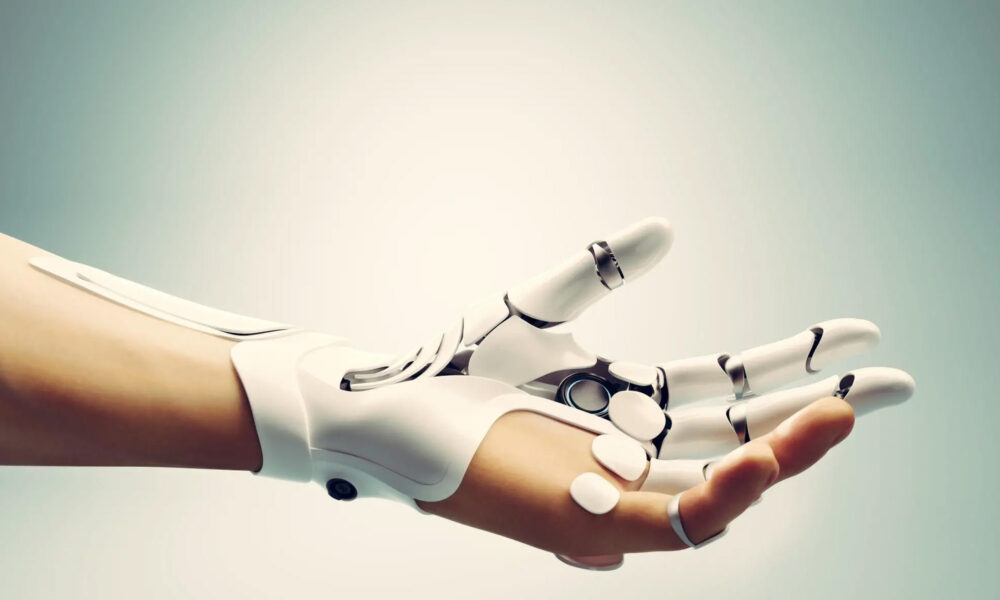News
New Artificial Skin For Robots Allows Them To Feel Things
A groundbreaking new development from a Caltech researcher means that robots will soon be able to “feel” their surroundings, with sensations relayed back to human operators.

Caltech assistant professor of medical engineering, Wei Gao, has developed a new platform for robots and their operators known as M-Bot. When it hits the mainstream, the technology will allow humans to control robots more precisely and help protect them in hostile environments.
The platform is based around an artificial skin that effectively gives robots a sense of touch. The newly developed tool also uses machine learning and forearm sensors to allow human users to control robots with their own movements while receiving delicate haptic feedback through their skin.
The synthetic skin is composed of a gelatinous hydrogel and makes robot fingertips function much like our own. Inside the gel, layers of tiny micrometer sensors — applied similarly to Inkjet printing — detect and report touch through very gentle electrical stimulation. For example, if a robotic hand picked up an egg too firmly, the artificial skin sensors would give feedback to the human operator on the sensation of the shell being crushed.
Also Read: Futuristic Electric Self-Driving Trucks Are Coming To The UAE
Wei Gao and his Caltech team hope the system will eventually find applications in everything from agriculture and environmental protection to security. The developers also note that robot operators will be able to “feel” their surroundings, including sensing how much fertilizer or pesticide is being applied to crops or whether suspicious bags contain traces of explosives.
Abdulmotaleb El Saddik, Professor of Computer Vision at Mohamed bin Zayed University of Artificial Intelligence, has noted that the new development offers even more applications and possibilities: “The ability to physically feel the touch, including handshakes and shoulder patting, could contribute to creating a sense of connection and empathy, enhancing the quality of interactions, particularly for the elderly and people living at a distance or those who are in space [such as] astronauts connecting with their family and children”.
